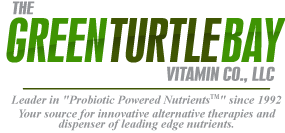Vitamin A
The following is excerpted with permission from a book written by Dr. Richard Podell, M.D. This information has been helpful to thousands of people in the past, but is not meant to replace your physician. Be sure to check with your physician before undergoing any change in diet. ©1993 The Podell Medical Center, all rights reserved. May not be reproduced in any form without prior written permission. (see Podell Medical Center)
VITAMIN A
SYMPTOMS THAT SUGGEST VITAMIN A DEFICIENCY:
–night blindness
–decreased tear secretion
–increased respiratory infections
–dry, rough skin
–easily irritated mucous membranes
–weight loss
–poor bone growth
–weak tooth enamel
–diarrhea and intestinal infections
–abnormal Pap smear or signs of cervical, stomach or lung cancer.
WHEN TO SUSPECT YOU MIGHT BE DEFICIENT |
-
Your diet is weak in the best food sources. For most purposes, a satisfactory intake of beta carotene will also supply the body’s need for vitamin A.
-
You have a condition that increases the body’s need for vitamin A: alcoholism, intestinal surgery or malabsorption, cystic fibrosis, pancreatitis, any severe wasting illness, or recent major burns or trauma.
-
You develop typical deficiency symptoms.
Tests to conform deficiency: Your doctor can measure your blood level of vitamin A. A dietician can estimate your vitamin A intake by reviewing a diary of your food you have eaten for the last 1 to 3 days. A dark-adaptation test, or an electroretinogram can be used to evaluate vision factors which depend on vitamin A.
BASICS:
Vitamin A used to be called the “anti-infective” vitamin because of the high rate of infections among vitamin A-deficient animals and humans. One of a family of chemicals called retinoids, vitamin A is often confused with beta carotene. The two are related, but vitamin A and beta carotene have different biochemical abilities.
Vitamin A promotes vision and prevents night blindness. It stimulates immune responses against infections, especially those of the respiratory and intestinal organs. Vitamin A supports healthy skin, hair and mucous membranes including those of the mouth, gut, rectum and vagina. Vitamin A helps regulate cell growth and may have a role in the prevention and treatment of cancer.
Because vitamin A is “fat soluble” it is best absorbed with a fatty meal. The liver takes up vitamin A, stores much of it, and releases necessary amounts into the blood. Because vitamin A does not dissolve well in water it doesn’t pass out with the urine the way water soluble vitamins do. Therefore, when intake is excessive it tends to accumulate in the body, increasing the risk for overdose toxicity.
We measure vitamin A in IU’s (international units) or more recently in RE or Retinol Units. 1000 RE’s is the same as 5000 IU’s.
HISTORY: |
An ancient Egyptian papyrus described the cure for night blindness as squeezing on to the eyes juice from a freshly cooked liver. We now recognize liver as nature’s best source of vitamin A. Vitamin A was “officially” discovered in 1913 when physicians identified a “growth-promoting” factor in cod liver oil, butter and egg yolk.
Vitamin A deficiency has been a relatively minor problem in the U.S. but it is one reason for the high death rates from diarrhea and infectious illness among infants and children in many third world countries.
Most physicians feel there is little role for vitamin A supplementation at levels higher than the RDA (recommended daily allowance). However, some nutritionally-oriented physicians argue that high dose vitamin A can be useful. However, high-dose vitamin A has strong potential for toxic side-effects and should only be taken, if at all, with careful medical monitoring.
WHEN YOU MIGHT BENEFIT FROM HIGH DOSE VITAMIN A |
Most people need only standard amounts of vitamin A. However, some (but not most) physicians advocate using vitamin A at high doses to treat various ills. Their recommended doses range from 25,000 IU to 300,000 IU.
CAUTION:
High dose vitamin A can be toxic and should never be taken except under the supervision of a knowledgeable physician–and even then you should obtain a second opinion. High dose vitamin A is especially hazardous in pregnancy and to small children. |
CONDITIONS FOR WHICH HIGH DOSE VITAMIN A HAS BEEN ADVOCATED
CONDITION |
CONFIDENCE LEVEL |
COMMENTS |
Acne |
probably effective |
Vitamin A is related to the skin medicines Retin-A and Accutane. At the doses need to work, these medicines are more effective and less toxic than Vitamin A. |
Preventing stomach ulcers in patients with major burns or trauma |
probably effective |
Some trauma and burn centers now routinely supplement vitamin A and other nutrients. |
Retinitis Pigmentosa, an inherited form of progressive degeneration of the retina |
probably effective |
One large controlled study found slower progression among patients given 15,000 IU daily of a form of vitamin A called retinyl palmitate. |
Cancer Treatment |
possibly effective |
Other vitamin A derivatives, used as medicines, are more potent and safer. |
Immune System Depression |
probably effective |
Vitamin A can increase the activity of several parts of the immune system. |
Infections |
possibly effective |
Anecdotes but few controlled studies suggest benefit for some people with recurring infections. |
Measles |
possibly effective |
In Africa, an area of great vitamin A deficiency, large doses of vitamin A reduce the death rate and severity of measles. However, vitamin A did not seem to help in the U.S., where there is less vitamin A deficiency. |
TESTS TO CONFIRM IF YOU NEED HIGH DOSE VITAMIN A: None available.
PRECAUTIONS |
WARNINGS: Do not take more than the RDA if you are pregnant. High dose vitamin A can cause fetal malformations. Do not take high dose vitamin A if you are nursing.Do not take high dose vitamin A if you have liver disease. Hepatitis, cirrhosis or other liver disease increases the risk for vitamin A toxicity. |
Symptoms of acute overdose: Nausea, vomiting, headache, dizziness, double vision, muscle in coordination, in infants–bulging of the soft area of the skull. For acute overdose call 911 or operator to connect to your nearest Poison Control Center.
Symptoms of chronic toxicity: dry or irritated skin or eyes, headache, visual impairment, hair loss, bone and muscle pain, cracks around lips, itching, appetite loss, fatigue, irregular menses, liver enlargement. If you develop these symptoms stop your vitamin A and consult your doctor.
In adults vitamin A toxicity has been reported (rarely) at intake levels as low as 25,000 IU daily. Most cases at this intake have been among people with liver disease. Other people get no toxic symptoms despite having taken 100,000 IU daily or more. However, statistically speaking, the higher the dose, the more likely the side-effects.
INTERACTIONS WITH DRUGS, FOODS, or NUTRIENTS:
Interacts Effect With
Antacids Decreased absorption of vitamin A
Anti-coagulants (blood-thinner): Increased risk of bleeding
Cholestyramine, Colestipol (cholesterol-medicines): Decreased absorption of vitamin A
Mineral oil
Neomycin
Sucralfate
Retin-A
Accutane Increased risk of vitamin A toxicity
DOSING |
For most people the RDA provides all the vitamin A needed. One can obtain this easily by eating moderate amounts of foods rich in vitamin A or carotene. For example, one medium size carrot, by itself, provides the RDA.
Best Food Sources:Vitamin A: Liver (3000 IU for one chicken liver; an incredible 45,000 units for one slice of beef liver!), fish liver oil, egg yolk and dairy fat.Carotene: Certain Fruit (apricot, cantaloupe, cherries, grapefruit mangos, papaya, peach, watermelon); Many Green Vegetables (asparagus, beet greens, broccoli, Brussels sprouts, cabbage, collard, cucumber, dandelion greens, endive, kale, lettuce, mustard greens, okra, parsley, parsnip, sweet pepper, spinach, tomato); Most beans, peas and legumes; Yellow vegetables (carrot, sweet potato, pumpkin, winter squash).Note: Many cereals, some breads, some margarines and also skim milk have vitamin A added by the manufacturer. |
The Recommended Dietary Allowance (RDA) of the Nutrition Board of the National Research Council:
Age Retinol International Equivalents (RE) Units (IU)
0-6 mo. of age 420 = 2100 IU
6-12 mo. of age 400 = 2100 IU
1-3 yrs of age 400 = 2000 IU
4-6 yrs of age 500 = 2500 IU
7-10 yrs of age 700 = 3300 IU
male:
11 years and over 1000 = 5000 IU
female:
11 years and over 800 = 4000 IU
pregnant woman1000 = 5000 IU
lactating woman 1200 = 6000 IU
Supplements: Adults may reasonably include up to 5000 IU vitamin A or carotene among their supplements. Many multivitamins contain this amount usually in the beta carotene form.
Over-65: Older people are more likely to be deficient and are more vulnerable to side effects if taking too much. However, their recommended intake is the same as for younger adults.
High dose supplements: Do not take high dose vitamin A without medical supervision.
How supplied: Usually as an oil in a fat soluble capsule. People who do not tolerate fat well may take a water soluble form such as vitamin A-palmitate or acetate.
Storage: In a cool, dry dark place, but do not freeze. Do not store in bathroom–heat an moisture may harm it. Keep safely away from children!
MYTHS, HINTS, SPECULATION and CONTROVERSY |
-
Vitamin A and beta carotene are different:
The body can convert carotene into vitamin A, but the two chemicals are different in several important ways:
In contrast to vitamin A, beta carotene is rarely toxic even in high doses. Beta carotene is a better antioxidant, and may be a better cancer preventive. Vitamin A is more likely to help with immune stimulation, infection fighting, and wound healing.
-
Children are more vulnerable to vitamin A overdose. Keep your vitamins out of reach.
-
Stop your vitamin A and consult with your doctor if you develop hepatitis. The appearance of liver disease can turn a formerly safe supplement dose into a toxic one.
-
This information has been helpful to thousands of people in the past, but is not meant to replace your physician. Be sure to check with your physician before undergoing any change in diet.
-
The Green Turtle Bay recommends taking the anti-oxidants PowerVites® and PowerMate® and either omega blend Signal369™ or Prinrose Oile for their GLA.




